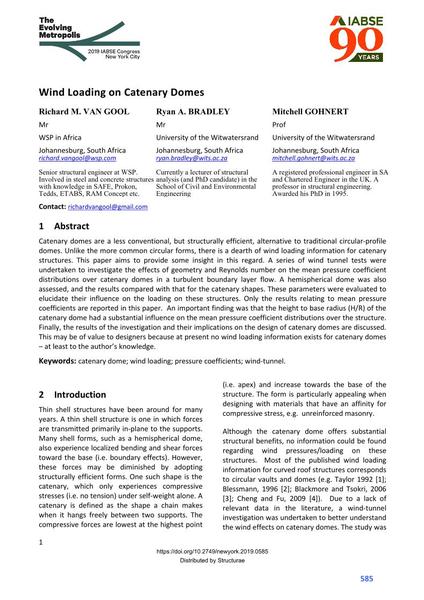Wind Loading on Catenary Domes

|
|
|||||||||||
Détails bibliographiques
| Auteur(s): |
Richard M. van Gool
(WSP)
Ryan A. Bradley (University of the Witwatersrand) Mitchell Gohnert |
||||
|---|---|---|---|---|---|
| Médium: | papier de conférence | ||||
| Langue(s): | anglais | ||||
| Conférence: | IABSE Congress: The Evolving Metropolis, New York, NY, USA, 4-6 September 2019 | ||||
| Publié dans: | The Evolving Metropolis | ||||
|
|||||
| Page(s): | 585-590 | ||||
| Nombre total de pages (du PDF): | 6 | ||||
| DOI: | 10.2749/newyork.2019.0585 | ||||
| Abstrait: |
Catenary domes are a less conventional, but structurally efficient, alternative to traditional circular-profile domes. Unlike the more common circular forms, there is a dearth of wind loading information for catenary structures. This paper aims to provide some insight in this regard. A series of wind tunnel tests were undertaken to investigate the effects of geometry and Reynolds number on the mean pressure coefficient distributions over catenary domes in a turbulent boundary layer flow. A hemispherical dome was also assessed, and the results compared with that for the catenary shapes. These parameters were evaluated to elucidate their influence on the loading on these structures. Only the results relating to mean pressure coefficients are reported in this paper. An important finding was that the height to base radius (H/R) of the catenary dome had a substantial influence on the mean pressure coefficient distributions over the structure. Finally, the results of the investigation and their implications on the design of catenary domes are discussed. This may be of value to designers because at present no wind loading information exists for catenary domes at least to the author’s knowledge. |
||||
